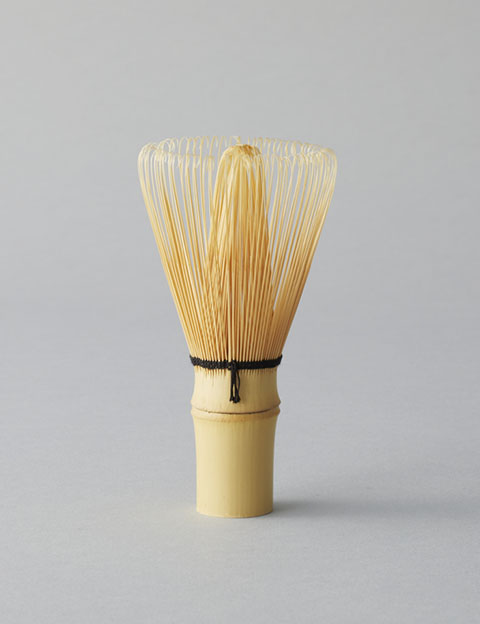TAKAYAMA Chasen (Tea Whisks)

The making of tea whisks began in the middle of the Muromachi era (1333-1568), when the younger son of the lord of Takayama was asked to make a whisk by Murata Juko, who had been instrumental in perfecting the tea ceremony. The method he used was passed down as a family secret from generation to generation.
Some time later, the family revealed the secret to sixteen chief retainers who then passed the techniques down through their own successive generations. As a result, Takayama is now the only place in Japan where tea whisks are produced.
About 120 different kinds of Takayama tea whisks are produced, with the material, shape and number of ear tips varying according to the tea ceremony school and the kind of tea. Such considerations include whether the tea is weak or strong, whether it is served in formal surroundings or outdoors, and whether the whisk is kept at home or as part of a traveling set. The whisk is also said to affect the taste of the tea, which differs according to the workmanship during the whittling process. In addition to traditional whisks, others are now made for decorative purposes or to produce a good head of froth on milk coffee.
Feature
There are 120 types of Takayama tea whisks. The materials, shape and number of ears tips vary according to the tea ceremony school and the use, including whether they are intended for light (usucha) or strong (koicha) matcha tea, for tea offerings, for open-air tea ceremonies, for tea boxes and so on. The taste of the tea prepared using these whisks may even vary depending on the process used to make them, a phenomenon known as “taste shaving.”
How to make
The bamboo is cut according to which part it will be made into. For example, the ear tips may be finely divided with a knife into between 60 and 240 individual tips, depending on the style and the intended use. The pieces are then warmed in hot water, pared down with a knife so that the tips gradually become thinner and are then bent with the aid of a spatula. Every other ear corner is chamfered and every other chamfered ear is woven. Each of these operation is performed by hand.

